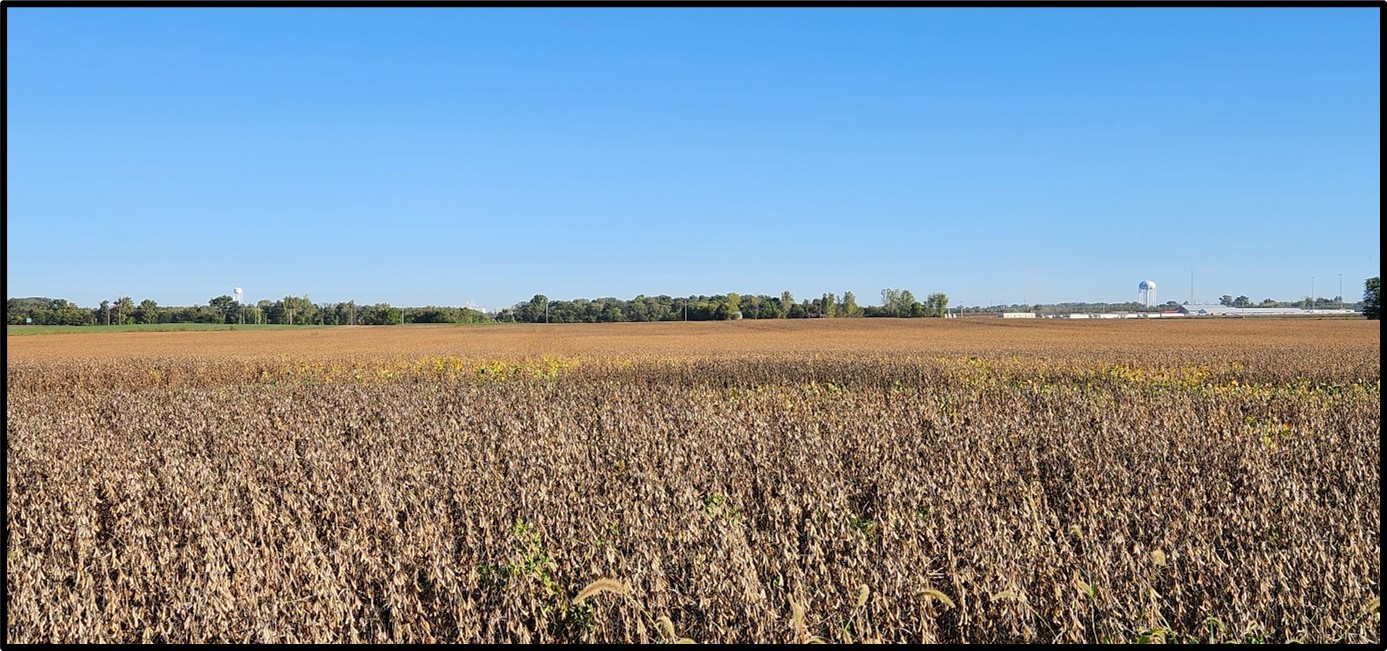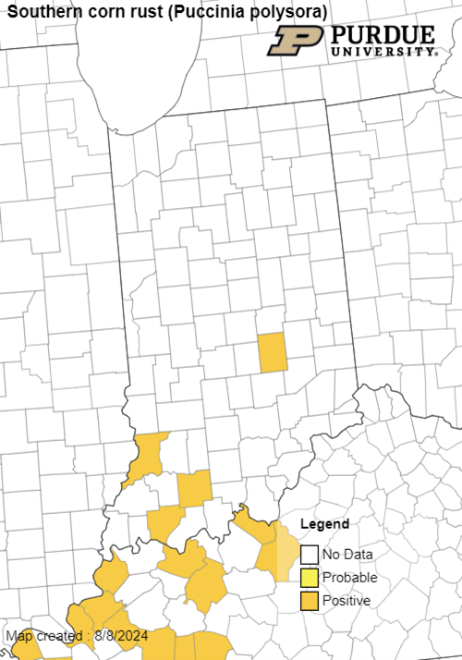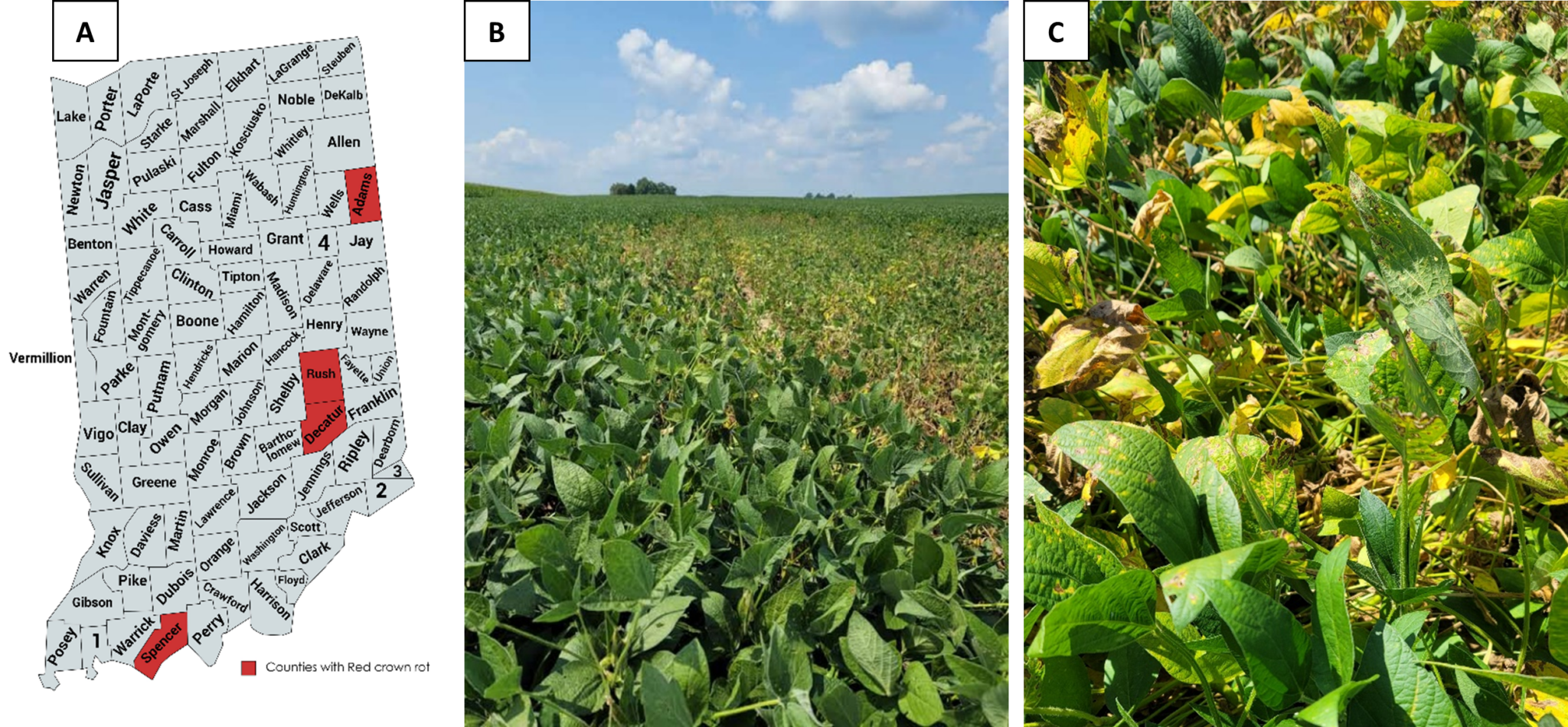
The Crop Protection Network (CPN) is a multi-state and international collaboration of Extension specialists and professionals, providing unbiased, research-based crop protection information.


The Crop Protection Network (CPN) is a multi-state and international collaboration of Extension specialists and professionals, providing unbiased, research-based crop protection information.

I am already getting questions on tar spot management as we finish planting corn here in Indiana.

Wheat has reached dough stage (Feekes 11.2) in our research plots in Southern Indiana.

I am excited this season to be able to share three new tools from the Crop Protection Network.

It is time to keep an eye on wheat for diseases and scab risk. There are a number of foliar diseases in wheat to watch out for.

There are a number of resources available for monitoring field crop diseases here in Indiana.

There have been many reports of black areas in soybean fields in Indiana this season.

It is now time to evaluate fields for any stalk or ear rot symptoms. This will aid in making assessments about field harvest order and if there is a risk of mycotoxin contamination.

Southern corn rust has now been confirmed in four counties (Knox, Dubois, Warrick, and Shelby) this week in Indiana (Figure 1). While tar spot continues to be documented across the state (Figure 2). I suggest if you have not gotten out and looked for these diseases now is the time. Even if your corn is approaching black layer it will be important to document tar spot in your fields for the future disease management decisions. There are currently 41 counties with a positive confirmation of tar spot (Figure 2). As we are learning this season when we have had favorable environmental conditions there may be pockets of tar spot even in areas that have not seen the significant yield impacts previously. In the map all gray counties indicate that tar spot was found in the county in previous seasons. I have been getting many questions on if a late season[Read More…]

Red crown rot of soybean has become a new concern this season in Indiana after a few localized occurrences have been found in previous years (see map, Figure 1A). We also have our first reports for 2024. This disease is caused by the soilborne fungus, Calonectria ilicicola. At this point in the field season, we are on the hunt to determine how widespread the issue may be here in Indiana. Therefore, we need your help in documenting red crown rot and collecting samples. What to look for: The disease may appear in patches in a field similar to our other soilborne diseases such as sudden death syndrome (SDS) and brown stem rot (Figure 1B). Early foliar symptoms may also mimic these diseases, which include chlorosis (yellowing) and necrosis of leaf tissue between leaf veins (Figure 1C). Therefore, it is important to take a few plant samples and check out the[Read More…]
© 2025 Purdue University | An equal access/equal opportunity university | Copyright Complaints | Maintained by Pest&Crop newsletter
If you have trouble accessing this page because of a disability, please contact Pest&Crop newsletter at luck@purdue.edu.